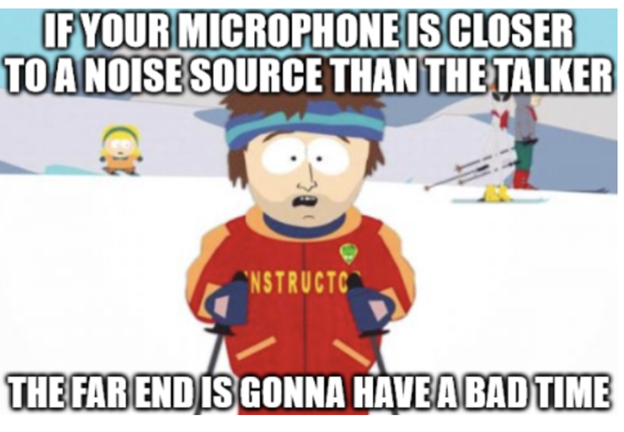Tech Tip: Microphone Placement
Posted by Video Conference Gear on 4/2/2021

The Eternal Question: How Close Should the Mic Be (to the speaker)?
If audio quality were the end-all goal in your conference world, all participants in the space would have a lapel microphone, or even a headset. That is obviously cumbersome, challenging, and costly. All of that said, audio quality is one reason NASA uses headsets when sending humans to space.
Okay, so most of us do not have the budget that NASA has for audio. We can make some decisions to help us improve our audio game. For the purposes of this blog, I will be talking in the context the average small/medium size conference room. Home office, training spaces and auditoriums are very different subjects that I will discuss in a future blog.

1.The microphone should be placed, as close as possible, to what you would like to pick up.
- Think of it as a cell phone, you don’t hold it away from your face and scream into it. The microphone should be in a central location where all participants are equal distance to it, allowing the end user to have crystal clear sound.
- Closer microphone placement results in better audio levels and dynamic range before any processing takes place, thus requiring less processing and improved processing results when applied.
- A disadvantage of a microphone being placed further from the talker, is that the mic may be closer to a noise source, such as HVAC vents/equipment, projector fans, external noise, etc. If the noise source is louder than the speaker (closer may equal louder) the noise may be a major problem.
2.When possible, use tabletop microphones before looking at ceiling or wall mounted microphones.
- Many microphone solutions intended to be used in today's PC based UC platforms will have hardware audio processing built in. In addition to that, many UC platforms also have software-based audio processing.
As with all things, there are compromises. Some limitations are,
- Practical; cabling, costs, availability etc.
- Aesthetic; appearance, architecture, etc.
I have some of my clients over the years, that just flat out do not want stuff on the table. If these factors are more important, we get it. Luckily, there are modern (typically more costly) solutions available that uses advanced processing and beam forming microphone arrays (yet another post).
Based on many years of experience, engineering solutions and troubleshooting quality issues, I have always found that closer is better.
tldr;
Whenever possible and practical, I always recommend microphones be placed closer to the meeting participants.
